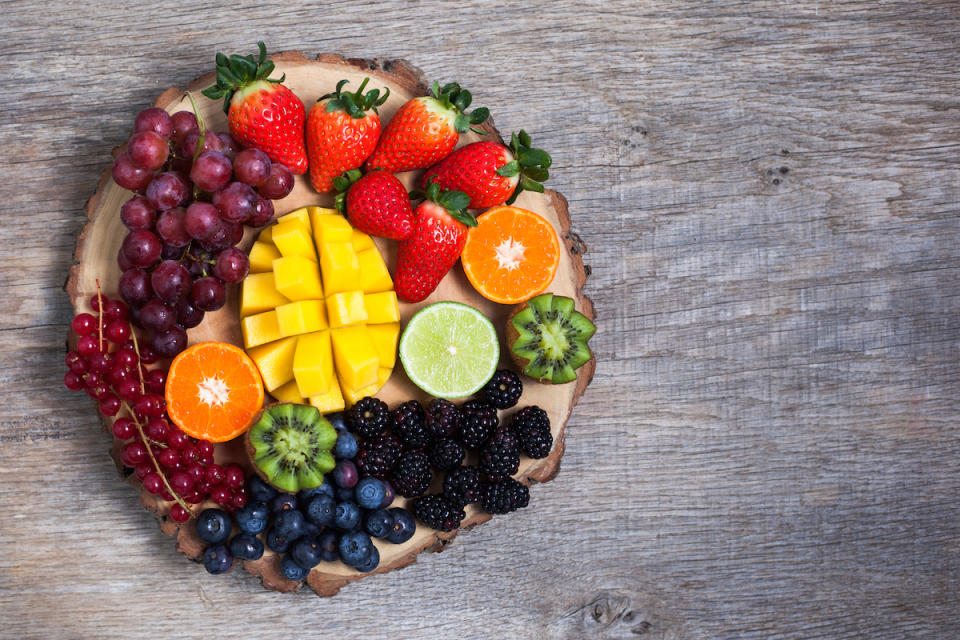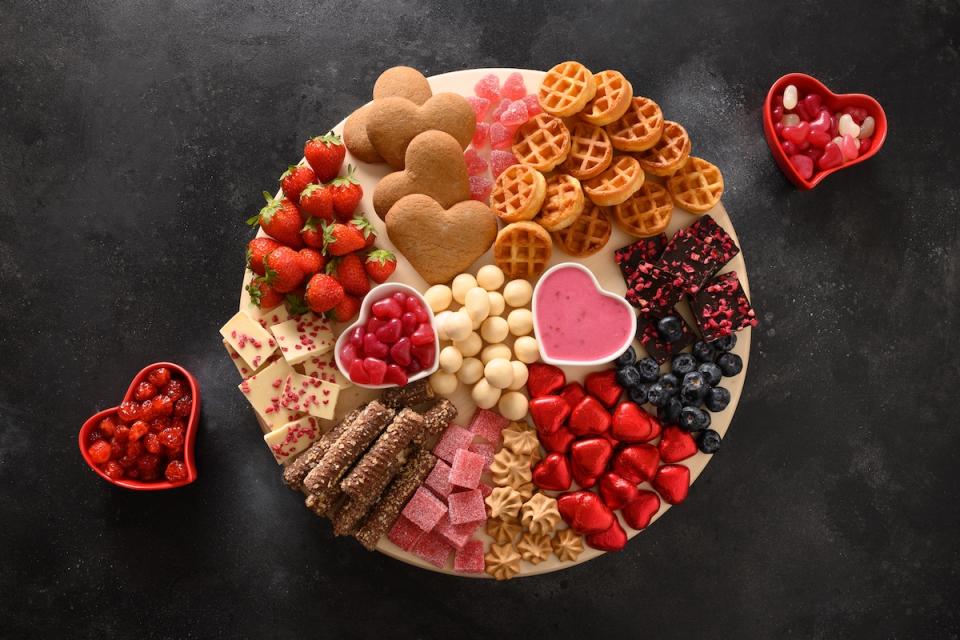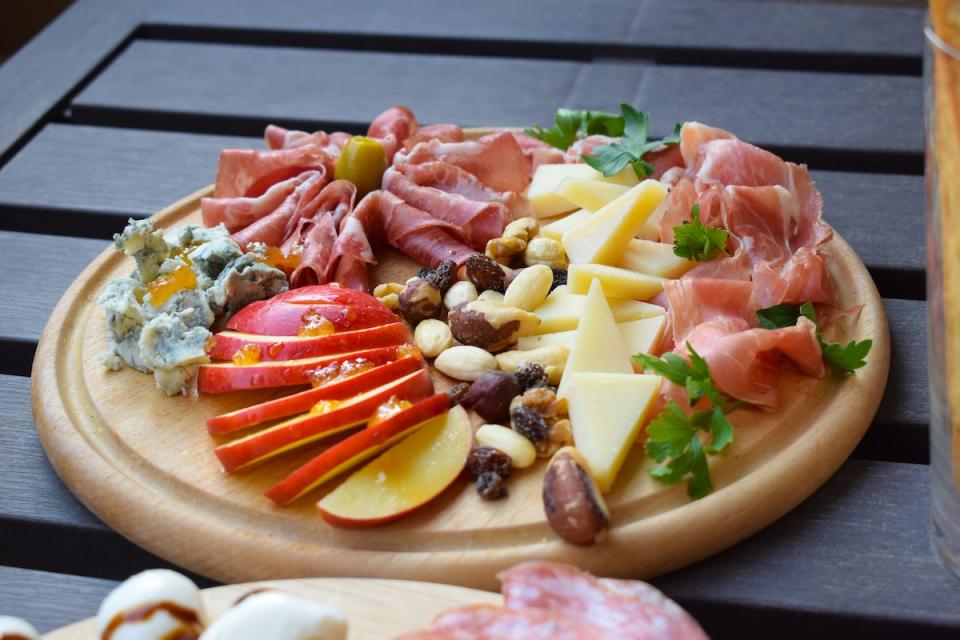Charcuterie Board Ideas: Sweet and Savory Platters for a Party of Two or Ten
I’m always in need of an appetizer or small dish, whether hosting a party, having a picnic, or contributing to the office potluck. Historically, making said appetizer was a chore — one more thing on an already long to-do list. Recently, however, I discovered a shortcut that’s made appetizer-ing much easier (and tastier). What’s that, you ask? The answer: a charcuterie board.
The next time you need to make an appetizer or small dish, whip up one of these fun party favors. Charcuterie boards are beautiful to look at, easy to throw together, and, most important of all, delicious. To get you started, a few ideas for putting together the perfect charcuterie board are below.
What is a charcuterie board?
A charcuterie board is a type of appetizer or snack that features a selection of meats, cheeses, and other accompaniments. The word "charcuterie” is derived from the French words for “cooked” and “flesh.” Traditionally, a charcuterie board included a variety of cured meats — particularly pork products like salami, ham, and sausages — laid out on a cutting board. Often, people mistakenly conflate charcuterie boards and cheese boards; but while many charcuterie boards feature the best cheeses and crème, there’s more to this decadent party platter than mozzarella and cheddar cheese.
Today, charcuterie boards can include an array of meats and cheeses, as well as other accompaniments like baguettes, crackers, fruit, dips, and condiments. They are often served as a light meal or snack, or as appetizers at parties large and small.
The Origins of Charcuterie
The origins of charcuterie can be traced back to ancient Rome, where pork was first preserved using salt and other seasonings. Over time, the practice of meat preservation evolved into the art of charcuterie, particularly in France, where it became an important part of the country's culinary heritage. Today’s charcuterie boards include everything from butter and spreads to nuts and dried fruits, which makes them both visually appealing and exceedingly delicious. They’re especially well-suited for holiday and New Year’s Eve parties.
Making a Charcuterie Board: The Basics
Now that we’ve defined a charcuterie board, how do you actually make one? The perfect charcuterie board is one that is balanced. To achieve this requires a variety of ingredients, equal parts salty and sweet. Here’s a step-by-step guide to putting together a well-balanced charcuterie board.
Step One: Meat
Start with a variety of meats, such as prosciutto, salami, and chorizo. Rarer meats like goose prosciutto or wild boar salami are nice options if you’re serving more adventurous guests. Either way, it’s best to lay a foundation of approachable ingredients like prosciutto and salami — and then build on that later if you like. Fold or roll slices of meat and set them on your board in a line, in groups, or in a fan shape. Creating the perfect charcuterie board is a creative endeavor, so don’t be afraid to experiment with your design.
Add Cheese Platter Components
Next is the cheese. A good charcuterie board has a variety of cheeses in different flavors and textures, from soft and creamy to hard and sharp. I like including a block of brie and gouda, as well as slices of a sharper cheese like cheddar or gruyere. Other options include parmesan, goat cheese, and blue cheese. You’ll need crackers — Wheat Thins and Triscuits are both a safe bet. As with meats, how you arrange your cheese and crackers is entirely up to you. Consider, however, separating soft cheeses like burrata and brie on opposing sides of your board, with cheese knives and labels beside each. Place gruyere or other hard cheeses (always sliced) and crackers between the two. Fiddle around with your arrangement until you’ve found one that’s pleasing to the eye.
A Touch of Sweetness
It’s now time to bring on the sweets. Fresh fruit like grapes, berries, and figs are all great options. Blueberries in a small bowl, sliced apples, and bunches of grapes scattered throughout add depth and dimension to your charcuterie board. You can also include dried fruit, like apricots or cranberries. Generally, I prefer a combination of both dried fruit and fresh raspberries, blueberries, or grapes. The contrasting textures add visual appeal and expand the scope of your board’s flavors. Another way to sweeten your charcuterie board is to add honey or jam. A petite pot of spreadable fruit jam or honey in a small bowl for dipping apple slices both work well.
A Bit of Crunch
Here comes the texture! You’ve got your soft cheese, salty meats, and juicy fruit — now it’s time to add crunch to the board. One of the easiest ways to do this is with nuts and seeds. Almonds, pistachios, pecans, and sunflower seeds are delightful options; you can also add spiced or candied nuts. Pretzels are another way to crunch-ify your board, and they provide a shapely contrast to your more geometric crackers.
The Final Touch
The last major player on your charcuterie board is dips and spreads — olive oil, spinach and artichoke dip, and pepper jelly all come to mind. Hummus, tapenade, and mustard are also delicious options. Invest in colorful small bowls or dishes for displaying your dips, and scatter them throughout your board and beside meats and cheeses like pepperoni and manchego. Again, creativity is key here — experiment with bowls and petits pots of varying sizes, and add a garnish to tie it all together. A sprig of thyme or rosemary beside olive oil is a nice touch. Though your garnish won’t likely be eaten, it adds aroma and aesthetic appeal.
What are the best charcuterie board ideas to try?
Making a basic charcuterie board is simple enough, but some events require something more inventive. Here are five distinctive charcuterie board ideas for when you really want to wow your guests.
The “Fruitcuterie” Board

The “fruitcuterie” board focuses, not surprisingly, on fruit. To make this board, arrange a variety of contrasting fruits on a platter. You might include apple and cantaloupe slices, a small dish of pomegranate seeds, and a few types of berries. Play around with the arrangement until your board evokes a colorful rainbow.
The Roasted Grapes and Brie Charcuterie Board

For a very simple yet elegant charcuterie board, pair roasted grapes with brie and focaccia. Start by oven-roasting the grapes in honey, vinegar, oil, and sugar; then spoon the mixture onto your board with a wedge of brie and focaccia slices. You can even whip up baked brie for a little cold-weather comfort. This dish lacks the multitudinous ingredients of other charcuterie boards, but trust me — it holds its own!
The Brunch-Themed Charcuterie Board

For brunch parties, put together a brunch-themed charcuterie board. This might include small bowls of berries, rows of bacon, mini quiches, and slices of toast with jars of jam, cream cheese, and other spreads. I can’t think of any better way to wake up in the morning than with a yummy brunch charcuterie board.
The “Desserts Only” Charcuterie Board

This sweet charcuterie board is the perfect end to a night of good food and good company. Here you’ll mix small bowls of chocolates (think M&M’s or chocolate chips) with more savory desserts, like mini slices of cheesecake, chocolate-covered pretzels, and salted caramel bites.
Budget-Friendly Charcuterie Board

Charcuterie boards can get expensive. If you’ve ever bought fancy meats and cheeses, you know they raise the grocery bill quite quickly. But just because you’re on a budget doesn’t mean a delicious charcuterie board is out of the question. For a more affordable option, keep things simple: Prosciutto and salami for the meat, sliced cheddar and a block of brie for the cheese, and apple slices and grapes for the fruit. Save the fancy dips and garnishes for another time.
Create the Charcuterie of Your Dreams
A charcuterie board is one of the best appetizers or small dishes you can bring to a party. Not only is it visually appealing, but it’s also a guaranteed crowd-pleaser. So why not be everyone’s favorite guest, and bring a charcuterie board to the party!
